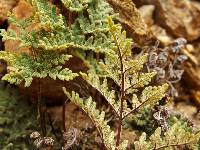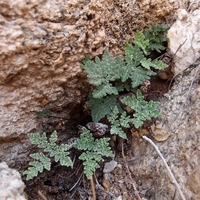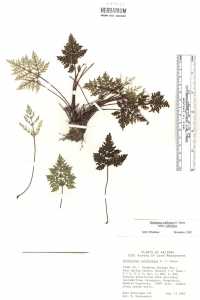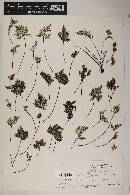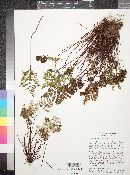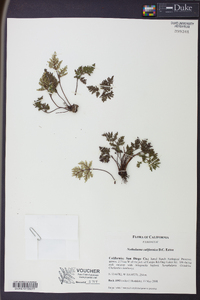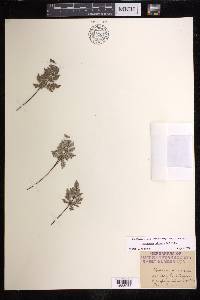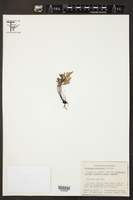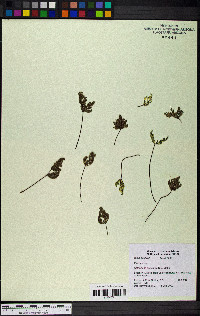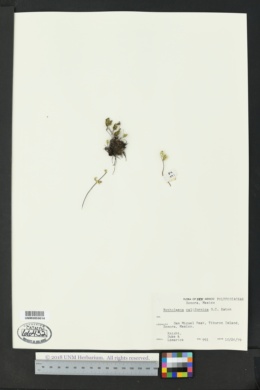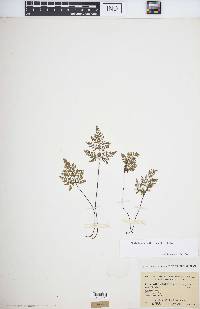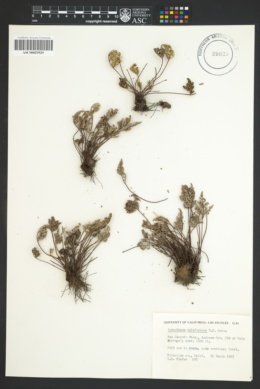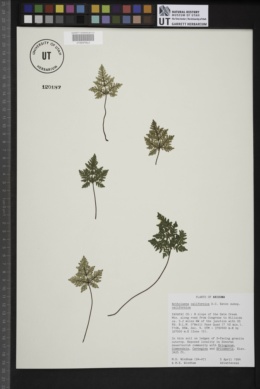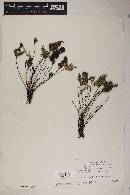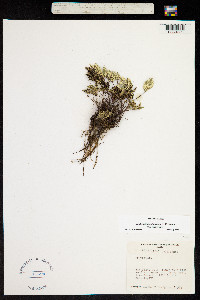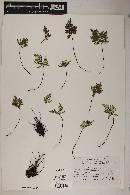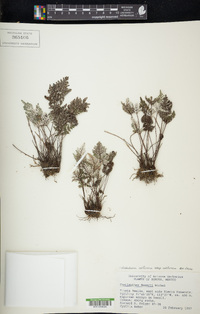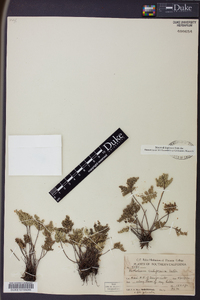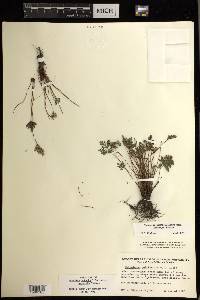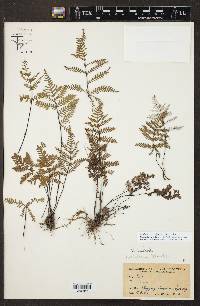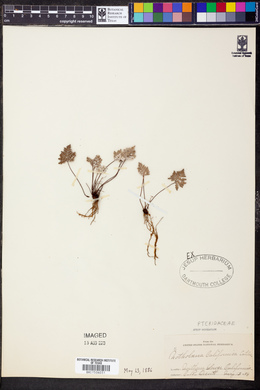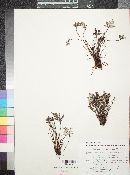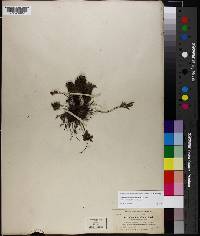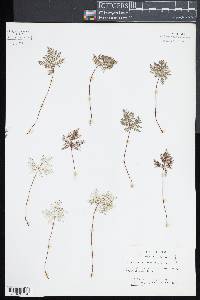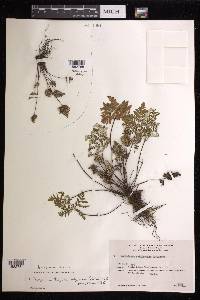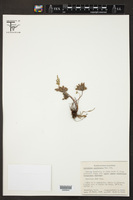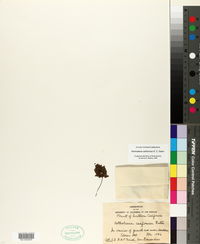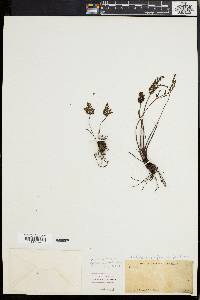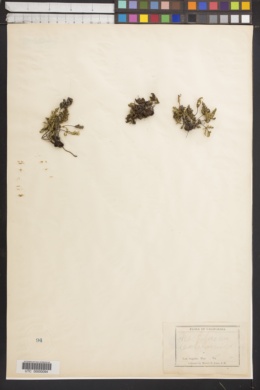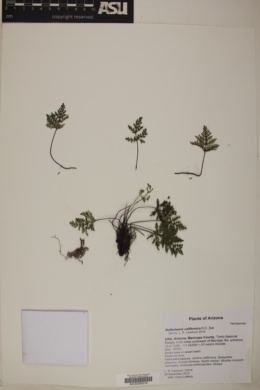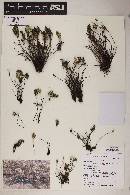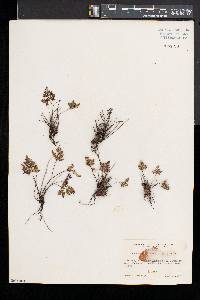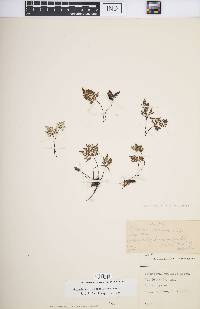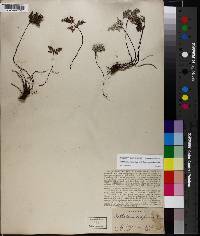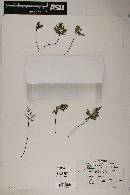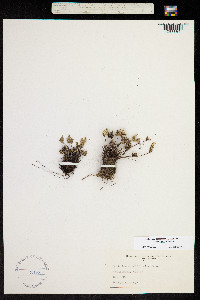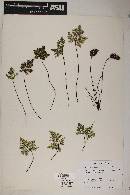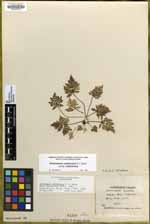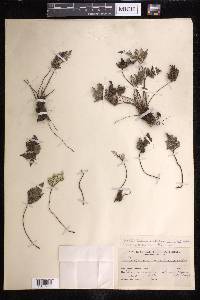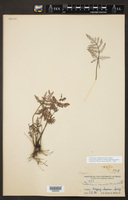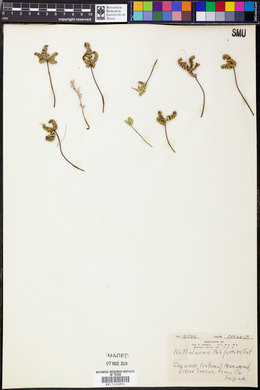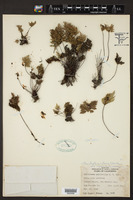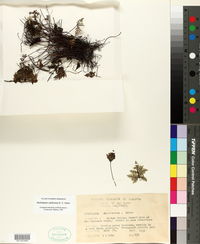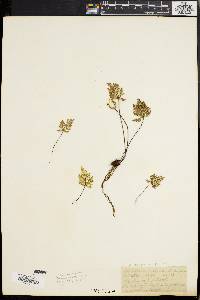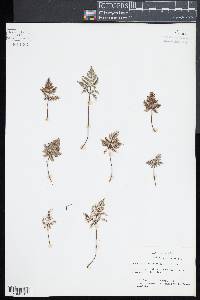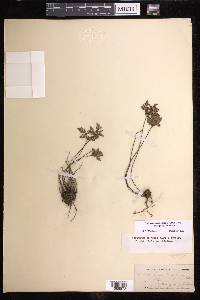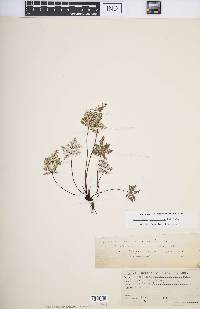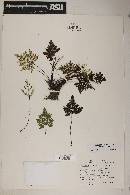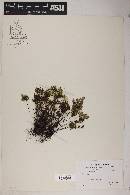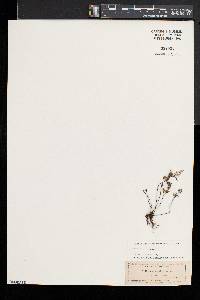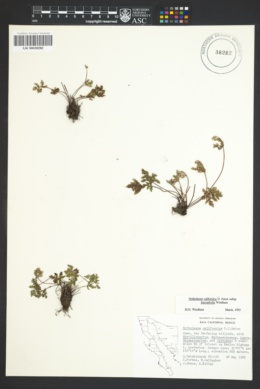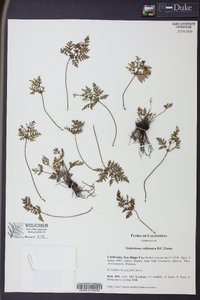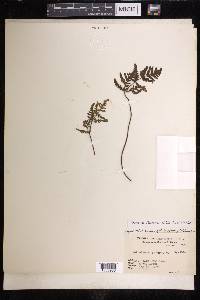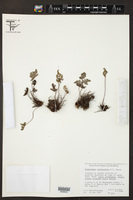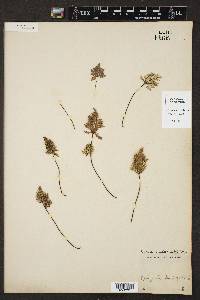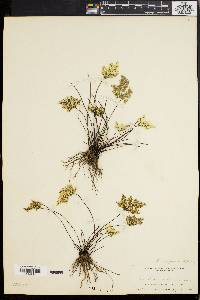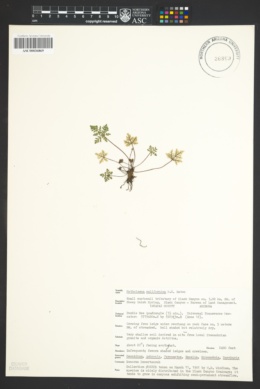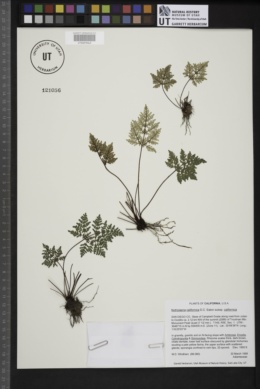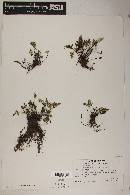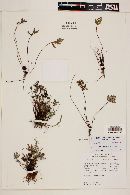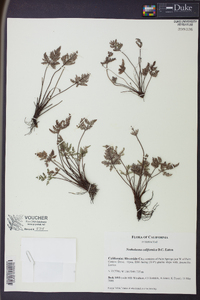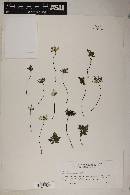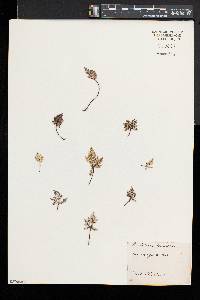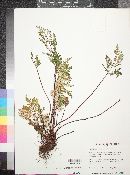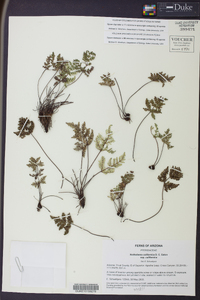Notholaena californica
|
|
|
|
Family: Pteridaceae
California Cloak Fern
|
Stem scales weakly bicolored, margins brown, very narrow and poorly defined, thin, ciliate-denticulate. Leaves 4--20 cm. Petiole brown, equal to or somewhat longer than blade, rounded adaxially, bearing scattered glands and a few scales near base. Blade broadly pentagonal, 3-pinnate, 1--2 times longer than wide, abaxially with conspicuous white or yellow farina, scales absent, adaxially glandular; basal pinnae much larger than adjacent pair, strongly inequilateral, proximal basiscopic pinnules greatly enlarged. Ultimate segments sessile to subsessile, narrowly adnate to costae or free; segment margins recurved but rarely concealing sporangia. Sporangia containing 32 spores. Notholaena californica comprises two distinct chemotypes, recognizable by farina color, that are treated here as subspecies. These white and yellow forms are strikingly different in chemical composition of the farina (E. Wollenweber 1984), and they are rarely, if ever, found growing at the same locality. Gene flow between the chemotypes in the region of sympatry (southern California) is prevented because both are apogamous in this area. The recent discovery that plants of N . californica subsp. californica from Arizona are pentaploids (M. D. Windham, unpublished data) suggests that this species has a complex evolutionary history that cannot be resolved until sexually reproducing (64-spored) progenitors are found.
General: Evergreen fern with short rhizomes, bearing weakly bicolored stem scales, margins brown, very narrow, poorly defined, thin, ciliate-denticulate, 4-20 cm tall. Leaves: On brown petiole, equal to or somewhat longer than blade, rounded above, bearing scattered glands and with a few scales near base; blade broadly pentagonal, 3-pinnate, 1-2 times longer than wide, conspicuous pale or bright yellow farina below, no scales, glandular above; basal pinnae much larger than adjacent pair, strongly inequilateral, ultimate segments sessile to subsessile, narrowly adnate to costae or free. Sporangia: Segment margins recurved but barely concealing marginal sporangia, containing 32 spores. Ecology: Found on rocky slopes and cliffs, often in dry sites and usually on granitic or volcanic substrates from 1,000-3,500 ft (305-1067 m); sporulates spring-fall. Notes: Distinguished by the weakly bicolored stem scales, narrow margins that are not as strongly revolute as other species, and the yellowish farina below. Etymology: Notholaena is from the Greek nothos, false, and chlaina, a cloak, a reference to the incomplete indusium, while californica means of or from California. Sources: FNA 1993 FNA 1993 Common Name: California cloak fern Rarity: None General: Evergreen fern with short rhizomes, bearing weakly bicolored stem scales, margins brown, very narrow, poorly defined, thin, ciliate-denticulate, 4-20 cm tall. Leaves: On brown petiole, equal to or somewhat longer than blade, rounded above, bearing scattered glands and with a few scales near base; blade broadly pentagonal, 3-pinnate, 1-2 times longer than wide, conspicuous pale or bright yellow farina below, no scales, glandular above; basal pinnae much larger than adjacent pair, strongly inequilateral, ultimate segments sessile to subsessile, narrowly adnate to costae or free. Sporangia: Segment margins recurved but barely concealing marginal sporangia, containing 32 spores. Ecology: Found on rocky slopes and cliffs, often in dry sites and usually on granitic or volcanic substrates from 1,000-3,500 ft (305-1067 m); sporulates spring-fall. Notes: Distinguished by the weakly bicolored stem scales, narrow margins that are not as strongly revolute as other species, and the yellowish farina below. Ethnobotany: Unknown Etymology: Notholaena is from the Greek nothos, false, and chlaina, a cloak, a reference to the incomplete indusium, while californica means of or from California. Synonyms: None Editor: SBuckley, 2010 |


